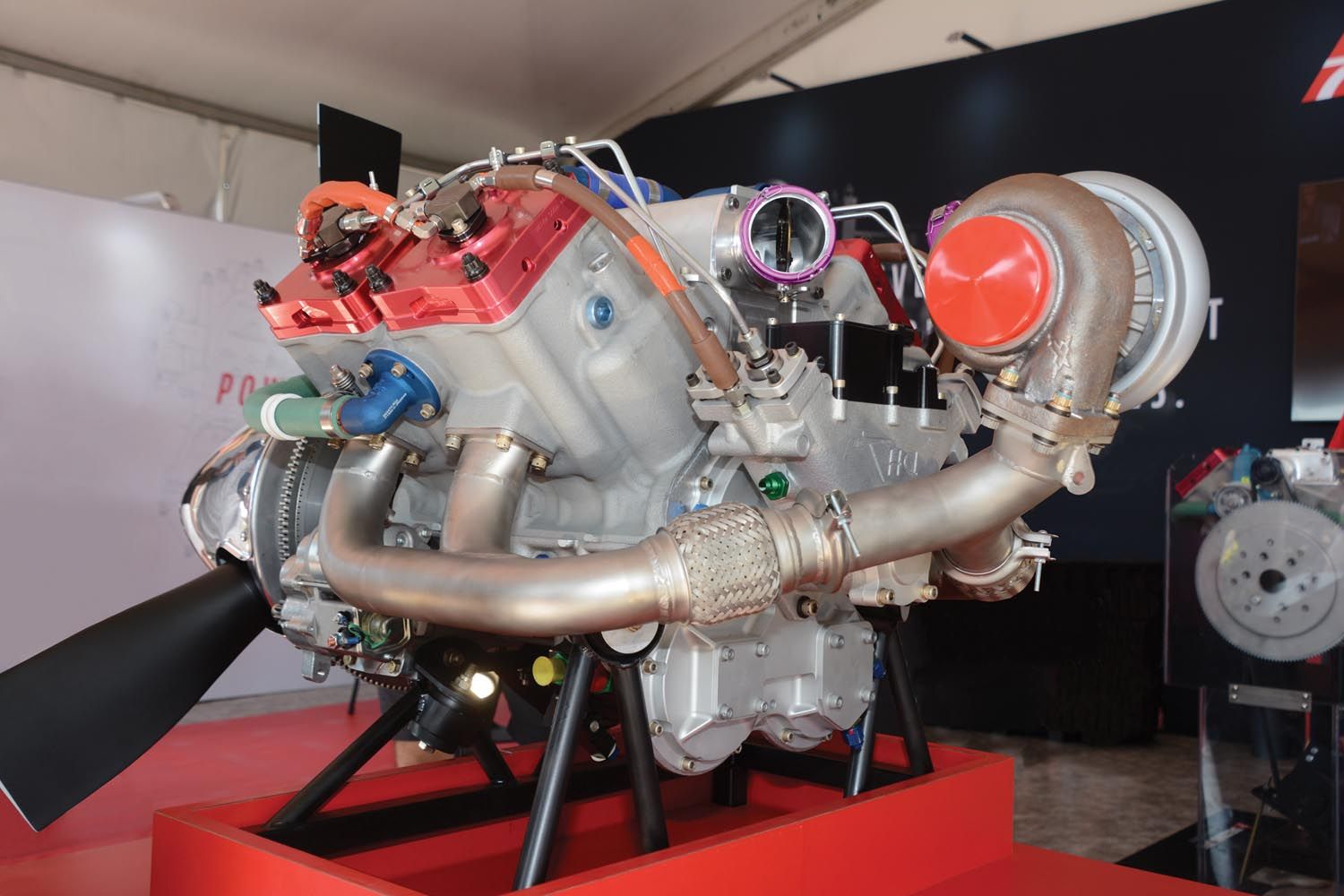 For ages one of the most common laments in aviation is we’re still flying around behind ancient engines. LyConsaurs they’re called, and when in the world are we going to move on to something designed after the demise of vacuum tube computing?
For ages one of the most common laments in aviation is we’re still flying around behind ancient engines. LyConsaurs they’re called, and when in the world are we going to move on to something designed after the demise of vacuum tube computing?
Maybe, I’m beginning to think, we already have.
No, I haven’t been smoking a strangely long pipe or just returned from a self-realization retreat, but I have been doing something eerily similar: writing the Engine Buyer’s Guide found elsewhere in this version of the KITPLANES® thicket. At times compiling such a story does approach a hallucinatory exercise, what with all the numbers glazing over. But in those moments of clarity it became obvious there are many more than just the familiar horizontally opposed powerplants in play. Even after discounting fringe players—the jets and rotaries—there are many more engines in the Buyer’s Guide than what we’re used to seeing at the typical Cessna-Piper-RV airport. Down at the flugplatz it’s nothing but the familiar air-cooled Flat Earth Society, with maybe the odd radial classic and a few Rotaxes. Meanwhile, in the Buyer’s Guide there are inlines and vees along with plenty of liquid-cooled options.
What gives?
Seems while we weren’t looking, a new breed of engines arrived. These engines are hardly in mass circulation, but they do exist, they are being fitted to airframes, they are flying and a core group of pilots are getting friendly with them. You could also say they’re modern and, depending on your Nosferatu quotient, you might postulate they are some large portion of the future.
We could start by defining “modern,” albeit in massively truncated terms suitable to this short column. Skipping the chalk talk as to why, two important characteristics of a modern airplane engine are a combustion chamber (and ports, valves and other breathing parts) designed in, oh, the 1990s or later and, to a lesser extent, liquid (water) cooling. The combustion chamber—essentially the cylinder head and piston crown—is important because it is key to establishing the engine’s need for anti-knock capability from the fuel, along with setting fuel efficiency and power output fundamentals.
Incredible knowledge about what goes on in combustion chambers has been gained by the auto industry since the 1970s. Driven by the demand for power, fuel economy and especially to reduce emissions, precisely what transpires to the air/fuel charge as it enters and responds to piston motion is today a universe ahead of what legacy aircraft engine designers gave us. Ironically, much of this fundamental combustion theory was pioneered during the big engine peak of WW-II when empires depended on it. But the turbojet ended serious piston engine development for 30 years until the auto industry took up the cause. Today, piston engine progress has come from carmakers—at least when they’ve not been distracted by electric motors and fuel cells.
As for water cooling, we could debate to a bloody draw which is better for a flying engine. Both air and water cooling have great benefits, but as engines get more efficient, and thus inevitably smaller displacement, the advantage tips to water cooling. Water cooling’s denser medium and greater thermal stability is the practical winner as power climbs. Ask Porsche, a company steeped in air cooling, which made the transition to water cooling decades ago. Or look at Rotax, which goes to the trouble to water cool the cylinder heads while leaving the cylinders air cooled.
There’s also an even more fundamental discussion regarding if smaller, higher-rpm modern engines are all that better than big, slow-turning direct drives, but we can share that beer another afternoon.
For now we can expect more contemporary general aviation engines to have sophisticated combustion chambers and possibly water cooling. To these mechanical characteristics we can add digital control of the fuel and spark as they can maximize the benefits of a good combustion chamber. So far, such engines have come from two sources: all-new aviation engines or automobile conversions. The all-new engines are in their own money class, one we mere mortals need not worry about because of the incredibly high costs. Examples are the Jet A-burning Continentals derived from Mercedes diesel car engines, the R.E.D. V-12 and EPS Graflight V-8 (wherever it may be). Fabulous engines all, but too far over the financial horizon for enthusiast flying. Look for them in military drones and business aircraft long before they ever trickle down to chasing pancakes.
What About Auto Conversions?
A smattering of domestic V-8 efforts have made or are making the rounds. A generation ago Geschwender-prepped Chevys and Fords successfully powered ag applicators; more recently Robinson turned Chevy’s LS series into a fine seaplane engine, AutoPSRU’s is zeroing in on RV-10 Chevy applications and Corsair Engine Technologies has been getting noticed for their Chevy-into-a-Cessna-172 experimentation.
Smaller auto engines are found all over the sectional but from our Buyer’s Guide, AeroMomentum and Viking are established firms putting forth some sort of auto engine.
All of these engines utilize a propeller speed reduction unit (PSRU), or gearbox for short. Now, gearboxes are a whole ’nother ball of engineering and manufacturing wax, but they are not impossible. Closer design and manufacturing tolerances and smoother (less misfiring) engines as found in cars contribute to successful PSRUs. Such gearboxes seem a necessity when working with inherently smaller displacement, higher-rpm engines.
Of course the new crop of engines have their share of questions. Cost alternates between a big advantage or an insurmountable problem. Minuscule production runs don’t build faith in reliability. Propeller, gearbox and long-term vibration effects are a few of the unknowns, and the hobby financial profile of some of the cottage companies involved may not engender confidence. But the fact is a measurable number of these engines are being sold and flown, especially in smaller aircraft. Fleet hours for these engines, still vanishingly small compared to the established aero engines, are slowly accumulating and so far we haven’t heard of many problems.
In short, there’s not much to suggest the latest round of auto conversions are failures. Time is the only measure, but so far the incentives of lower purchasing, running and overhaul costs are enticing the sportier, more Experimental builders and it seems to be working for them.
At the same time the dream of purpose-built, clean-sheet-design aircraft engines is proving fiscally challenging outside of the market stratosphere. The R.E.D. V-12 is likely the best example. It has successfully provided 500 hp to a good number of deep-pocket prototypes and proof-of-concept aircraft, along with repowering Yak and other certified airframes. But all of these have been initiatives priced well above mainstream Experimentals such as the typical RV builder might squeeze together. The Jet A Continentals have likewise flown just fine but are simply too expensive for regular people to buy. And unfortunately for Continental, this was also the case with their water-cooled Voyager series back in the ’80s. In short, the next generation of advanced aero engines for sport flying is not coming from Williamsport or Mobile.
The main issue, as always, has been scale. There just aren’t enough aircraft piston engine sales to justify what it costs to design, produce and—the big one—certify them today. It’s been that way for many years and is only getting worse as the GA fleet stagnates and the U.S. industrial base trudges along somewhere between off- and on-shoring itself.
Which points to auto conversions as the one possible source of modern engines for sport—and dare we say—general aviation aircraft. A huge problem is that we haven’t delivered much technical progress for decades, so now we must leap a chasm to make a meaningful move. Yes, the engines already exist from the auto industry. But the PSRU and other bits to adapt them to aircraft—the parts supply, maintenance and overhaul capabilities, not to mention the market and regulatory/legal acceptance required to bring any source of new engines to the general aviation mainstream—is asking a lot.
Then there is integrating new engine shapes and water cooling into what has been a horizontally opposed, air-cooled world for ages. At least that is something we Experimental airplane builders can have some fun doing.
But for now, there is movement to more contemporary engines by builders of the lighter Experimental aircraft. Fascinatingly, price seems the main driver as the repurposed auto engines often show a cost advantage. That’s something helped by the recent big increases in legacy airplane engine pricing as well as something to consider for your next build or repowering.










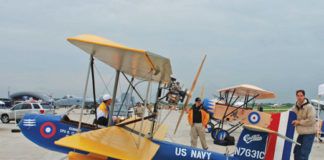
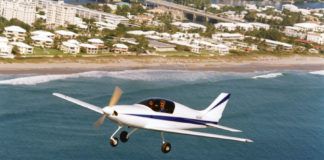
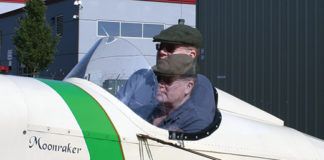
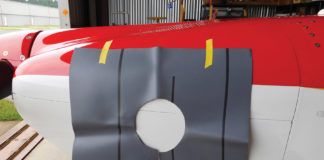
Hey Tom, what’s the engine shown in the photo for the article?
Pretty sure that is the deltahawk diesel. Considered using this as my engine but it is a bit out of my price range. The biggest problem I have with most of the alternate engines is that they are either too expensive, don’t have a lot of support for installing have to do a lot of the FWF work yourself or they don’t have the greatest reputation for reliability. I ended up just buying a core for an IO-320 that I am going to overhaul with the assistance of an A&P friend of mine. That will end up costing me around $20K-$24K which is cheaper than anything but something like the AeroMomentum and Viking engines and there are still some outstanding questions I have on those engines.
I would have really liked to put one of the Rotax 916IS engines in my RV-9A but the $50K price tag was just out of my range.
Tim, yes, that’s the new Deltahawk engine on display at AirVenture 2023.
As I understand it Deltahawk are working on FWF kits for RV14 and RV15 to follow. The price is supposedly comparable to the IO 390 FWF. It burns JetA and is therefore about 20% more fuel efficient and about half the price of AvGas outside the USA. Sounds like a winner on the international scene at least to me
This 2 stroke diesel is an inverted V-4 and the prop in connected to the crank, so, no gearbox/psru.
Using mechanical fuel injection, the only was to shut off the engine is to cut off the fuel.
It is a bit heavy, but; no carb, no mags, no cam, no valves/ pushrods/ rocker arms, so only 9 moving parts, plus the supercharger and turbo.
I’m hoping that this will be my next engine when the GO-300 finally fails.
Wish some company like Viking or Aeromomentum would pick up small automotive diesel engines to modify them for aviation use. It’s been done for quite some time on an individual basis – like the PSA diesels suggested for the Gaz’aile 2 or the 165hp VW TDI flying in an Austrian PA-18 (looks awful, seems to work well – google OE-APW). Something available on the second hand market, with a proven base design and lots of parts around.
The Deltahawk looks interesting, but $100k for an RV-14 FWF package is pretty much a deal breaker for most people.
Diamond DA40 NG seems to have figured out auto conversion with diesel
Kinda, but the Austro Engines were the second try of this concept (Mercedes-Benz Diesel engines) after Thielert went bankrupt. Also, these engines were directly aimed for the certified market and not even available in an experimental version – which made them pretty expensive.
On the other end of the spectrum you have stuff like the Wilksch diesel, but that was a bespoke design if I remember correctly and therefore couldn’t really make use of automotive mass production. And the same goes for the Deltahawk, I guess, which is why those things will always be expensive.
AeroMomentum and Viking take second hand car engines and modify them, the same should be possible for diesels. The Gaz’aile2 builders do that for themselves already, using an early 90s Peugeot engine which weighs a ton but gives them fuel consumption of under 2gph at 100kts or so.
“Today, piston engine progress has come from carmakers—at least when they’ve not been distracted by electric motors and fuel cells.”
Don’t forget motorcycle manufacturers who have typically been leaders in internal combustion technology. Power to weight is a big deal on motorcycles.
Toyota has a 3 cylinder, 250 lb turbo engine in their GR Corolla that puts out 300 stock horsepower! You would think they would be pushing things to get that much out of a tiny engine, but tuners have ramped it up to over 600 HP without it self destructing, so the stock 300 must be pretty reliable. I would love to see someone convert it to aviation use and lower the compression a bit so that it didn’t need premium gas. I would think you would end up with an engine with rock solid reliability and still get about 1hp/lb !
Nosferatu?
I’m pretty sure you meant Nostradamus…
On topic, though, I really hope DeltaHawk’s momentum puts a fire under other companies, including the LyConsaurs, to pursue something modern. I am aware of the Continental offerings, but it seems like some margin-hawkish bean-counters have caused their CD-2XX to vanish from public visibility…??
I’m about a decade away from starting any build (neither I nor my wife would stomach the typical, 7-15 year build process that takes over the kitchen, garage, and basement, while requiring 2 HELOCs), but I desperately hope that by the time I’m sourcing parts for it that there is a competitive compression ignition (or even the more exotic small turboprop/Jet-A fueled) market for experimental propulsion.
Think about the application. Lycoming/Continental run at 75% power of rated maximum HP for hours on end. An IO-360 Lycoming is rated at 200 hp at 2700 RPM. Cruise is is ~2400 rpm @ 24″ manifold pressure.
Automobile applications are different than aircraft. On top of these differences, think of altitude effects on engine performance.
This is a common argument but doesn’t really shed much light on the issue. The 4 cylinder Ford VSG-411 engine in my generator has run at 50-100% power for 6000 hours without any issues (it is using some oil now). If anything the constant 1800RPM seems to be an advantage.